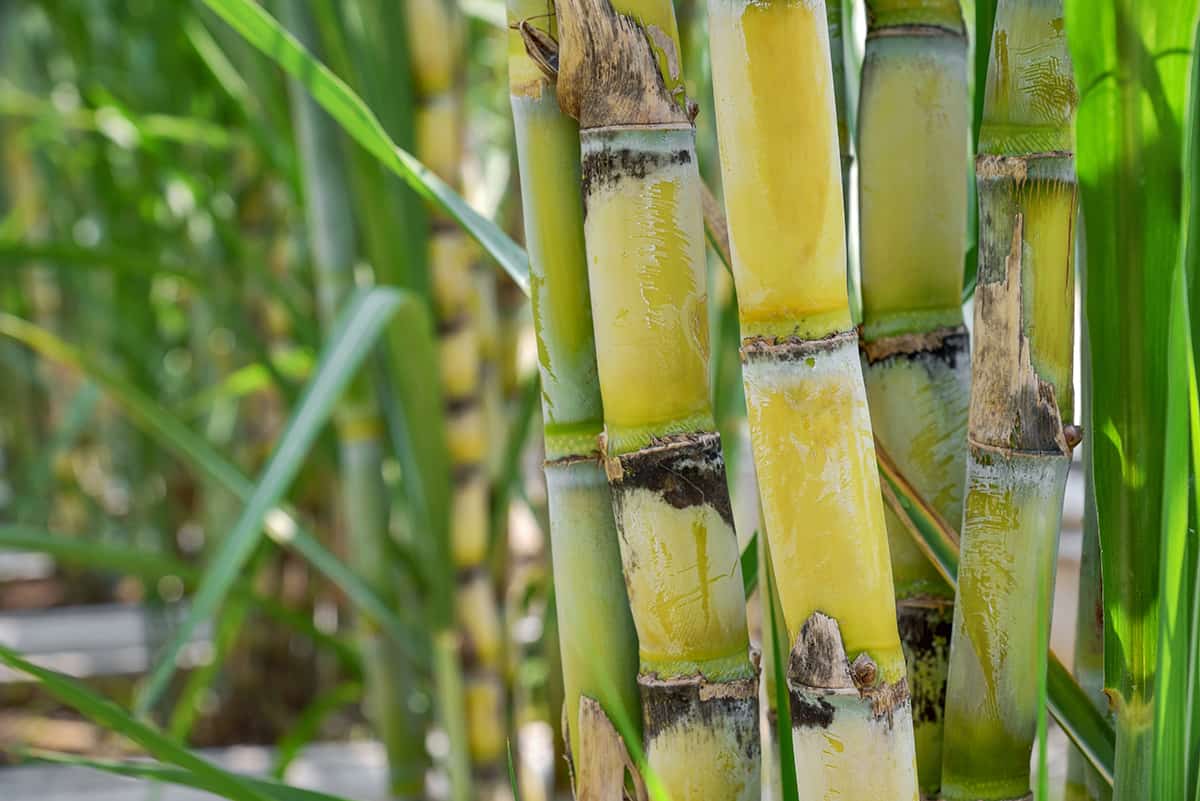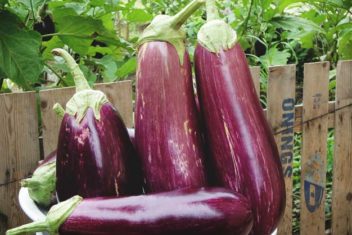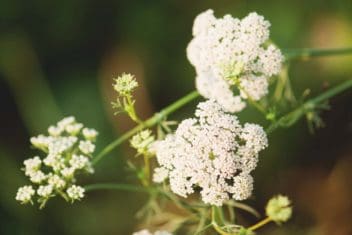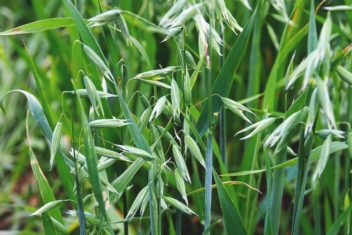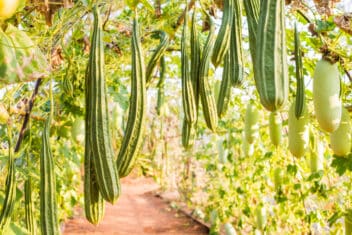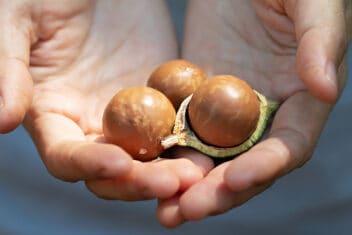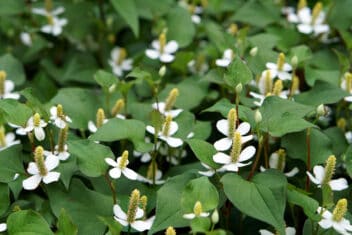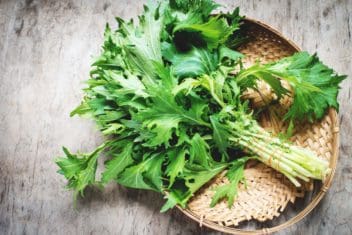There’s a reason why sugarcane is the number one commercially harvested plant in the world – it’s a sweet treat. Grown in the billions of tons, it provides up to 70 percent of the world’s commercial sugar. But many people don’t realize that growing sugarcane in the home garden is not only possible – it’s easy.
Plus it makes a lovely ornamental, sort of like a mix between a giant grass and bamboo.
Sugarcane is one of the most exciting and unique plants I’ve grown and I think you’ll feel the same, so let’s get started.
What is Sugarcane?

Sugarcane (Saccharum officinarum) is a perennial grass native to tropical and subtropical parts of the world. With all of the migrations of sugarcane around the globe, there are many hybrids being developed.
Commonly thought to have been originally domesticated around 4000 BC, sugarcane may have originated in New Guinea or Southeast Asia before being introduced into the Mediterranean and Caribbean around 1400 AD.
When grown in tropical areas sugarcane can be up to 20 feet tall. In cooler areas, it will average 8 to 10 feet tall.
Grown primarily for sugar and sweet liquid, sugar cane is being increasingly grown for biofuels. In the home garden, it’s a wonderful plant the kids can chew on and, if you have a press, you can extract the tasty liquid to drink and use in all sorts of recipes.
How to Plant Sugarcane
You can grow sugarcane all year round in zones 9 to 10. Temperatures below 68ºF aren’t suitable since this plant grows best in tropical environments. Temperatures between 90ºF to 100ºF are optimal.
You can always try growing sugarcane in areas outside of zones 9 and 10, but be aware that your plants might not make it if cool weather strikes.
Sugarcane loves sun and lots of it. A little afternoon shade is okay, but not necessary.
Aim for a soil pH of 6 to 6.5 with very fertile soil. When it comes to picking a location, sugarcane makes a great windbreak, but be wary of the leaves, which can sometimes be sharp. You probably don’t want the plant growing next to your patio.
There are a couple of methods for planting sugarcane: all use a cane rather than seeds or rhizomes. There are some plants that I regularly suggest you buy from your local garden center due to poor germination rates or difficulty in propagating. Sugarcane is not one of them. It’s pretty reliable.
Plant in late summer so the cane can have time to overwinter and get established. This gives the plant a good seven to eight months of solid growth from early spring to late fall so that you can harvest after a year.
Plant Directly into the Soil
This method has never really worked for me because, although I grow sugarcane, I am definitely not in a tropical environment. If you live somewhere more tropical, it may work better for you.
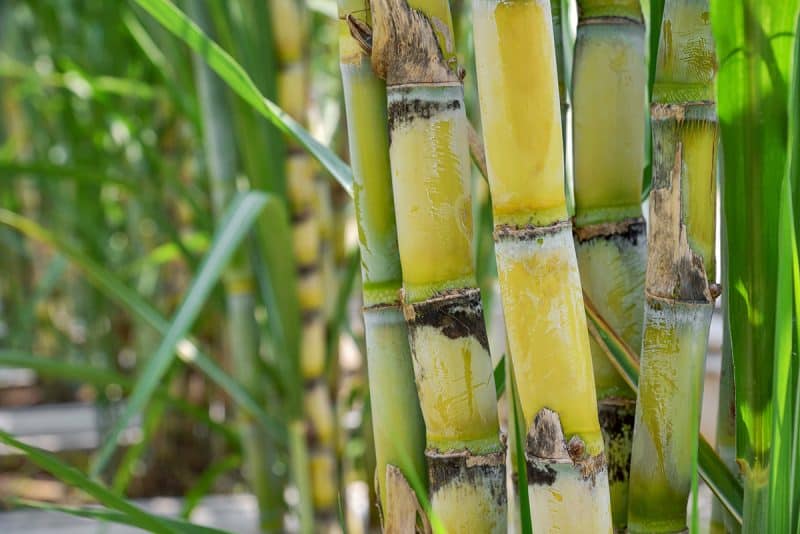
The canes have series of nodes. Each of those nodes can produce a whole new plant ready for harvest in around a year.
Cut a cane into pieces with at least three intact nodes. Note that only one of those nodes will reproduce into another plant, but we want to give it the best chance, which is why give it three nodes.
Lay the section of cane into a shallow furrow and cover lightly. Water well and mulch over winter. You should see a new plant push through the soil in spring.
Some people don’t bury the cane. They lay it on top of the soil. This allows roots to grow first, then the new plant follows. My area is too cold and this doesn’t work for me.
Rooting in Water
Sugarcane responds well to this method, and it’s one I use all the time. It’s perfect for when growing in containers but suits ground planting as well.
Cut the cane into segments about 15 inches in length, ensuring at least three nodes are on it. Use a container that you can fill with clean water and stand the cane up in it. You need to make sure at least one of the nodes is submerged in the water.
Roots will show up in around two to six weeks. The nodes will sprout a new plant and I try to leave the cane in the water until the new growth is about six inches long. At this point, transplant to the garden or into a container.
The best temperature for rooting sugarcane is between 68ºF and 86ºF. If you start this process when the temperatures outside are cooler than that, complete the entire process inside.
Planting Sugarcane in Containers
This is my preferred method of planting sugarcane. I have large pots in a corner of the deck that gets all day sun year-round. Plant a node as you would in the ground.
Use a good quality potting mix that drains well. The container will need to get progressively bigger as the plant grows. Just make sure to water well because pots dry out very easily.
Caring for Sugarcane
Although you can’t just plant sugarcane and leave it, you won’t be tending to a temperamental plant, that’s for sure.
Fertilizer
Sugarcane loves nutrient-laden soil with lots of nitrogen and phosphorus. To keep things simple, I add a well-balanced fertilizer to the soil when the stem starts to sprout.
If transplanting from the water-rooting method, dig the fertilizer in a week before planting.
For both methods, add fertilizer to the soil that is higher in nitrogen about two to three months later. Repeat if the growth is slow in another two months. Use a sustained release fertilizer if you can.
Water the fertilizer in well.
Water
Sugarcane loves water and constantly moist soil. It doesn’t like wet feet, though, so the earth must be free draining. A consistent two inches a week should be sufficient water. I water three times a week.
Keep the pots free of weeds and remove any dead leaves from the sugarcane.
Pruning
If your sugarcane is an ornamental, you may want to prune it to shape in spring and summer to keep it to your desired height. Otherwise, leave it to its own devices.
Companion Planting for Sugarcane
Sugarcane generally takes up quite a bit of space, but if you can plant with or near it, here are some options.
- Elderberry
- Lemongrass
- Comfrey
- Sage
- Lemon Verbena
- Nasturtiums
Common Problems and Solutions for Growing Sugarcane
Although I never had any issues with my sugarcane, there are a number of issues that can affect it.
Yellowing Leaves
Yellowing leaves could be a sign of insufficient watering or nutrients. Water and feed well to ensure the plant is strong. If it’s just the lower, older leaves turning yellow and falling off, it’s just the cycle of the plant.
Sugarcane Borers
This pest bores into the stem of sugarcane and consumes the flesh. It can damage the stem enough to make it fail to grow. The holes this little bug creates enable other pests and diseases to enter the plant.
The best way to keep these pests out is to avoid them completely. Remove weeds and all garden debris, and feed and water the sugarcane well to keep it optimally healthy.
Neem oil is one of my favorites to avoid all boring pests.
Sugarcane White Grub
This pest feeds on the roots of sugarcane and may cause serious damage because you don’t know they are there until the plant loses vigor. Other signs will be yellowing, wilting, and even death in bad cases.
Keep the soil healthy and rotate where you plant sugarcane each year.
Aphids
As with most plants, aphids like to nibble on sugarcane. Unless the plant is young or weak, they shouldn’t cause any serious damage, however. Read our comprehensive article on aphid control.
Sugarcane Mosaic Virus
Many insects transfer this virus to sugarcane so the best defense is to keep insect pests away. Use regular sprays of neem oil, organic pyrethrum, or insecticide of your choice.
Signs of this virus are a red and green mosaic pattern on the foliage. There is no cure, so you’ll need to pull the plants and start over.
Sugarcane Eyespot
Red eye-shaped rings appear on the plant and foliage. These don’t really affect the yield or health of the plant too much.
Use a fungicide if you think it necessary, but unless the problem gets really bad, just let it be.
Harvesting and Using Sugarcane
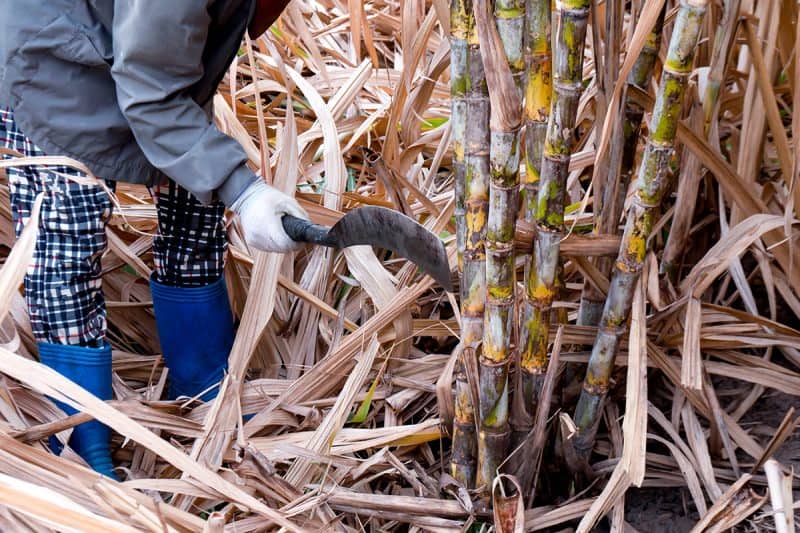
For the sweetest canes, let the plant grow for as long as possible. Cut the stems of the canes off just above the surface of the soil.
If you are lucky enough to live in the right zone, the plant should regrow for next season.
Clean the outside of the cane. Use a sharp knife to cut away the outer skin. Cut the sugarcane into smaller bite-size cubes or bigger.
Place these cut stems into a pot and cover them with water. Boil for two hours minimum. Strain the spent canes away and the water should be delicious sugar water.
You could also do what we do. Skin the cane and chew on the fibrous insides. Once all the delicious sugar has been sucked out, throw the sticks away.
Once you cut the canes, you can store them in the fridge for at least two weeks.
If you have a press, you could give extracting directly from the canes a go to end up with pure liquid sugar.
